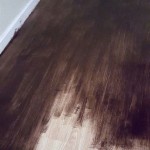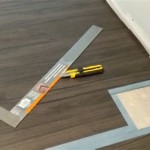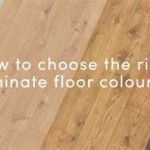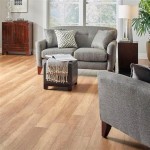Best Sound Absorbing Flooring Options
The prevalence of noise pollution in residential and commercial settings necessitates effective sound mitigation strategies. Flooring, often underestimated, plays a crucial role in sound absorption and impact noise reduction. Selecting the optimal flooring material significantly contributes to creating quieter, more comfortable environments. This article explores various flooring options renowned for their sound-absorbing properties, providing detailed insights into their characteristics and applications.
Understanding Sound Transmission and Absorption
Before delving into specific flooring types, it's essential to understand the principles of sound transmission and absorption. Sound travels in waves, and when these waves encounter a surface, several things can occur: reflection, transmission, and absorption. Reflection involves the sound waves bouncing off the surface, contributing to reverberation and echo. Transmission refers to the sound waves passing through the material, potentially disturbing adjacent spaces. Absorption, conversely, entails the material converting the sound energy into other forms of energy, typically heat, thereby reducing the intensity of the sound wave.
A material's sound absorption coefficient (SAC) quantifies its ability to absorb sound. This coefficient ranges from 0 to 1, where 0 indicates complete reflection and 1 signifies complete absorption. However, SAC values vary across different frequencies, as materials may absorb some frequencies better than others. In addition to SAC, the Impact Insulation Class (IIC) is a crucial metric for flooring. The IIC measures the floor's ability to block impact noise, such as footsteps or dropped objects, from transmitting to the room below. A higher IIC rating indicates better impact noise reduction.
Factors Influencing Sound Absorption in Flooring
Several factors determine a flooring material's capacity to absorb sound. These include the material's density, thickness, and surface texture. Denser materials generally provide better sound insulation, reducing sound transmission. Thicker flooring can also improve sound absorption and impact noise reduction by creating a greater barrier for sound waves. Surface texture also influences sound absorption. Porous or textured surfaces tend to absorb more sound than smooth, reflective surfaces due to the increased surface area available for sound wave interaction.
The presence of an underlayment beneath the flooring is another significant factor. Underlayments, typically made of materials like felt, cork, or rubber, provide an additional layer of cushioning and sound absorption. They effectively dampen impact noise and reduce airborne sound transmission. Choosing the appropriate underlayment is crucial for maximizing the sound-absorbing properties of any flooring system.
Carpet: A Classic Sound Absorbing Choice
Carpet remains a popular choice for sound absorption due to its inherent properties. The soft, fibrous structure of carpet effectively absorbs sound waves, reducing reverberation and echo within a room. Different types of carpet offer varying degrees of sound absorption, depending on factors such as pile height, fiber density, and backing material. Higher pile carpets generally provide better sound absorption than low-pile carpets due to their greater surface area and increased ability to trap sound waves.
The density of the carpet fibers also plays a crucial role. Denser carpets offer better sound absorption and impact noise reduction. Furthermore, the backing material contributes significantly to the carpet's overall performance. Backings made of felt or rubber provide superior sound insulation compared to traditional jute backings. When selecting carpet for sound absorption, consider both the pile height and the backing material to optimize performance.
Beyond the carpet itself, the use of a carpet pad or underlayment further enhances its sound-absorbing capabilities. A thick, high-quality carpet pad can significantly reduce impact noise transmission and improve overall sound absorption. Selecting a pad specifically designed for sound reduction is a worthwhile investment for creating a quieter environment.
Cork Flooring: A Sustainable and Sound-Absorbing Option
Cork flooring offers a unique combination of sustainability, comfort, and sound absorption. Harvested from the bark of cork oak trees, cork is a naturally renewable and environmentally friendly material. Its cellular structure, composed of millions of air-filled cells, provides excellent sound insulation and impact noise reduction. Cork flooring is naturally resilient, providing a comfortable walking surface and further damping impact sound.
The sound-absorbing properties of cork flooring are comparable to those of carpet. Its cellular structure effectively absorbs sound waves, reducing reverberation and echo. Furthermore, cork flooring is naturally resistant to mold and mildew, making it a healthy and hygienic choice for residential and commercial applications. Its inherent properties contribute to a quieter and healthier indoor environment.
Cork flooring is available in a variety of styles and finishes, including tiles and planks. It can be installed as a floating floor or glued directly to the subfloor. Using a cork underlayment beneath the flooring further enhances its sound-absorbing capabilities. Proper installation is crucial for maximizing the performance of cork flooring, ensuring a tight seal and preventing sound transmission.
Rubber Flooring: Durable and Effective for Noise Reduction
Rubber flooring is known for its durability, resilience, and excellent sound-absorbing properties. Commonly used in gyms, schools, and commercial spaces, rubber flooring effectively reduces impact noise and airborne sound transmission. Its dense, flexible structure absorbs sound waves and dampens vibrations, creating a quieter and more comfortable environment.
Rubber flooring is available in a variety of forms, including rolls, tiles, and interlocking mats. Recycled rubber flooring is a sustainable option, diverting waste from landfills and providing a durable and sound-absorbing surface. The thickness and density of the rubber material significantly influence its sound-absorbing capabilities. Thicker and denser rubber flooring provides better sound insulation and impact noise reduction.
Rubber flooring is often used in conjunction with an underlayment to further enhance its sound-absorbing properties. A rubber or foam underlayment provides additional cushioning and reduces sound transmission to the room below. Proper installation is essential for maximizing the performance of rubber flooring. Seams should be tightly sealed to prevent sound leakage and ensure a consistent sound barrier.
Beyond the aforementioned options, other flooring materials can contribute to sound reduction when combined with appropriate underlayments and installation techniques. For example, vinyl flooring, particularly luxury vinyl tile (LVT) and luxury vinyl plank (LVP), can offer enhanced sound absorption compared to traditional hard flooring options, especially when paired with a sound-dampening underlayment. Likewise, engineered hardwood flooring, consisting of a hardwood veneer over a core of plywood or fiberboard, can offer some sound insulation benefits, particularly when installed over a resilient underlayment.
Ultimately, the optimal flooring choice for sound absorption depends on various factors, including the specific noise concerns, the desired aesthetic, and the budget constraints. Careful consideration of the material's properties, the underlayment selection, and the installation method is crucial for achieving the desired level of sound reduction and creating a quieter, more comfortable environment.

When Quiet Matters A Guide To Acoustic Flooring All Things

Sound Absorbing Flooring 4 Options Twenty Oak

Sound Absorbing Flooring 4 Options Twenty Oak

When Quiet Matters A Guide To Acoustic Flooring All Things

Best Flooring To Absorb Sound Soundproof Cow

How To Soundproof Floors Do It Yourself Solution That Actually Work

Types Of Sound Insulation To Dampen Noise Guide Forbes Home

Sound Proof Flooring Soundblock Solutions

How To Soundproof A Floor With Sound Underlayment Installing Mat

The Right Sound Absorbing Flooring For Your Commercial Space
Related Posts








